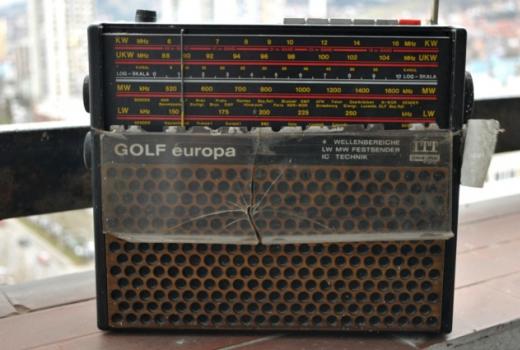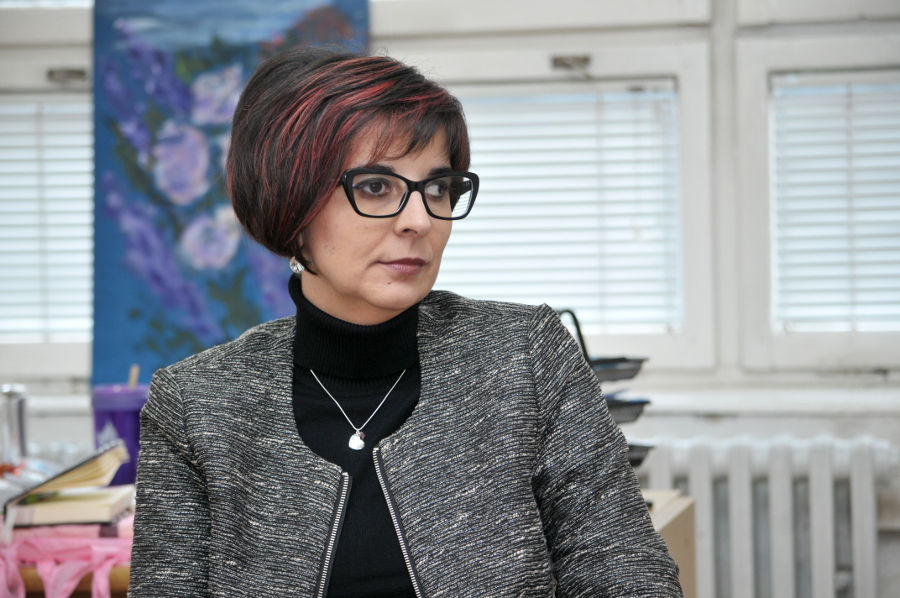Government and Media (1): Squandering millions for the mayor’s affection

Government and Media (1): Squandering millions for the mayor’s affection
15/03/2016
About 30 million KM are transferred every year from the budgets of government institutions into the accounts of public and private media outlets in Bosnia and Herzegovina.
Photo: Adi Kebo/zurnal.ba
At least 7.5 KM a year per citizen of Bosnia and Herzegovina is spent on the media, according to a survey conducted by Žurnal over several months. We are not talking here about the compulsory monthly radio and television subscription fee, or the money taken by a newsstand when a newspaper is bought. We are talking about the 30 million KM transferred every year from the budgets of government institutions into the accounts of public and private media outlets in Bosnia and Herzegovina – public broadcasters, news agencies, local public television and radio stations, private TV and radio stations, newspapers and magazines.
For months, Žurnal has collected information on budget spending for the media in 2013 and 2014. We read through hundreds of audit reports and budget execution reports, sending hundreds of requests for access to information, and our estimate of 30 million KM is probably too conservative. We did not receive information from all the ministries at the level of the Federation of B&H. We also do not know how much money the courts in B&H spend in relation to the media on publishing advertisements, calls, tenders and on making convictions; and data are also missing for various agencies and institutions funded from the budget.
More than half of these funds are spent directly on local public media: 12 local TV stations and 61 radio stations. C antons, municipalities and cities in the Federation invest around 12.5 million KM in 47 local public media operating in the entity through regular annual funding only. Twenty-three such media outlets operate in the Republika Srpska, and a little under four million KM a year is spent on their operation.
Addictive Independence
In theory, these media outlets should serve citizens, bringing them information and pointing out their rights and obligations in the communities in which they live. But do these media really serve citizens, or do they rather serve local power-holders? Can independence and criticism be expected from media and journalists whose existence directly depends on the mood of the municipality head?
Lejla Turčilo, professor at the Faculty of Political Science of Sarajevo, told Žurnal, “In theory, we would say that in the government-public-media triangle, the public and media should be allies. In our country, however, at the local level, looking even from the aspect of programs, public media very often serve as public-relations providers for local governments, without fulfilling their role of providing information to citizens.”
The European Commission, year after year in its progress reports for B&H, expresses concern over the influence of politics on local public media. Despite that, there are no independent analyses of the program contents of these media outlets. It is assumed that influence primarily comes from the fact that these media are direct budget beneficiaries, and also that local governments directly select media management structures.
“If you select the management, if you give money, then control and power are on your side. Journalists are in an unequal position from the very start. It is hard to expect someone whose director was directly selected by someone in power, and who gets or does not get a salary depending on whether the budget is full or empty, to put uncomfortable questions to those who give the money and select the management,” says Turčilo.

Prof. dr. Lejla Turčilo
Lejla Turčilo reminds us that television directors are selected along political lines, and that there is a lot of discussion as to whether it is necessary for a media manager to have journalism experience. Her view is that media are not, or at least should not be, news factories, and that it is not possible to run a media outlet like one.
“What you have very often is a situation in which managements of local media know only enough about journalism to buy silence or to buy favours. These are the two key problems – buying silence and buying favours through the selection of suitable staff, both in management and at lower levels, as well as the selection of journalists themselves. We have this, the selecting of suitable people, plus funding as a method of disciplining. This way, media are placed under direct control,” says Turčilo.
On the other hand, Amer Džihana, director and co-editor of the analiziraj.ba platform, a web portal that analyzes and evaluates the most influential media contents in B&H, is not certain that such heavy instrumentalization of media is present.
“When we speak about harmful influences, about connections with local politics, I would like to see some research that supports it. It seems to me that the conclusions that have been reached are simply common sense; they are logical, and they are something we assume. However, whether there really is such heavy instrumentalization, whether elections really are won through local media – these are assumptions that are not confirmed by research,” Džihana told Žurnal.
Lejla Turčilo believes that the academic community does has insufficient interest in monitoring small local media.
“We are used to viewing B&H through a prism of large urban communities. The other thing is that resources for research projects are rather limited, and are always the result of individuals and their enthusiasm. The third important thing is that it is quite difficult to get people from small media, from small communities, to even talk about their position, considering that they are in a much more difficult situation in that regard, too,” says Turčilo.
The Political Science professor nevertheless believes that local public media are still an important source of information for a large number of citizens, despite the large number of internet portals.
“I think it is a rather interesting phenomenon that local governments want and believe that their position of power is more credible if they have a media outlet in their hands. For us, media have become the fourth pillar of government. Having one’s own media outlet is a very useful toy and is quite important, despite younger generations being online. It seems to me that local political elites still want these local media more than citizens want them,” says Lejla Turčilo.
Amer Džihana believes that local public media have become a kind of burden for heads of municipalities.
“These stations are a burden that is exerting pressure because you have to come up with budget funding for them although they are not as useful to them,” says Džihana.
There are no concrete data on listener and viewer ratings of these stations, because these media are not in the so-called viewership monitoring system. Although, for example, the supervisory board and marketing department of Sarajevo Canton Television had requested that this television station be included in the viewership monitoring system, the management decided it was a “disproportionate business risk”. They justified their decision by assessing that such data have “doubtful subjective and objective credibility (outdated people meters procured some 20 years ago)” and a high cost of service.
The 2014 Report on the Work and Operation of TVSA, adopted by the Sarajevo Canton Government in January this year, often mentions the “most watched” and “iconic” shows, without stating a concrete number of viewers, basing their viewership estimates on “findings obtained through direct contact with clients and viewers”.
A survey carried out by the director of the analiziraj.ba platform several years ago showed that TVSA and other public local televisions have their audiences.
“I personally do not have a lot of doubt that the news caters to those who are currently in power, although I have not seen any distinct bias,” says Džihana, referring to news and informational programs on local media outlets.
Money Squandering
A large number of media outlets operate in B&H and they are all fighting for their share of the small and divided market with the biggest advertiser, the state. Professor Lejla Turčilo does not think B&H needs 44 televisions, 140 radio stations, over 100 daily newspapers and magazines, and an unknown number of internet portals.
“Realistically, we do not even have the need for this number of commercial media, let alone this number of public media. What is debatable with regard to local or some of these local public media is the fact that financial resources, which could be spent on local infrastructure, are spent on them. That does not mean that with the disappearance or closure of such media, the citizens’ need for information of local importance would stop, but that perhaps there is some possibility of rationalization – that in some communities you do not need to have both a cantonal and a city television station. The third thing is that if commercial media exist in some communities, they could and should also fulfill informational functions. Private media also have social responsibility,” maintains Turčilo, and adds that if a public media outlet is shown to not be watched or listened to, that it is not a relevant source of information, or does not produce public interest products, then that media outlet should not exist.
“But local authorities do not judge spending for public media in that way. They measure profitability by the positive reputation and influence they have garnered the previous year through such a media outlet,” Lejla Turčilo told Žurnal, emphasizing that another problem concerns which media outlets are the first to fall victim in the process of budget cuts. “It is always those who are critical of local government.”
Both Professor Turčilo and Amer Džihana believe that a lack of transparency of budget spending for the media can be harmful. Financing the media from budgets does not stop with a subsidy or grant for a particular media outlet; it continues with the publication and broadcasting of advertisements, commercials, greetings, and so on.
“Money really is squandered in every direction and citizens do not see much effect in an informational sense, while on the other hand there is a shortage of funds for other projects of importance to citizens. This shows that budget and investment policies in municipalities are based on parameters other than public interest,” says Lejla Turčilo.
Žurnal’s survey showed that budget funds are used for buying programs and equipment for public media, paying for ads, holiday greetings, funding specific shows, promotional articles and video clips, and so on. We learned, for example, that Radio Herceg Bosna is funded from at least eight budgets: the budget of the Herzegovina-Neretva Canton and budgets of the municipalities of Stolac, Čitluk, Tomislavgrad, Livno, Čapljina, Kiseljak and Ljubuški. We also learned that TVSA is paid by the City of Sarajevo and six municipalities for “chronicles of current events”, hosting guests in its studio, and the transmission of formal sessions.
This article was originally published by Zurnal.info and is republished here with the author's permission.
Translation: Kanita Halilović
This article has been produced with the financial assistance of the South East European Media Observatory project, supported by the European Union. The contents of this article are the sole responsibility of the author and can in no way be taken to reflect the views of the European Union.




